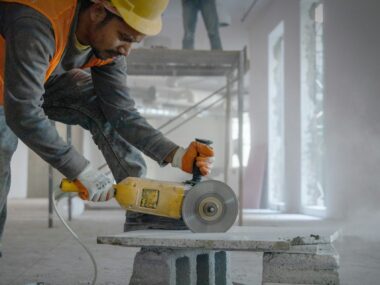When planning your home’s exterior painting project, you want a finish that will not only look stunning but will also stand the test of time. The biggest challenge, however, lies in achieving durability while maintaining that flawless appearance.
Whether you’re tackling it as a DIY project or hiring seasoned professionals, this guide will walk you through actionable exterior painting tips to enhance both the longevity and visual appeal of your home’s exterior.
Why Preparation Is Everything in Exterior Painting
Before you even think about picking up a paintbrush, preparation is key. This often-overlooked step is what separates a mediocre paint job from one that will last for years.
1. Prioritize Thorough Cleaning and Surface Preparation
The foundation of long-lasting exterior paint is a clean, smooth surface. Dirt, grime, mildew, and loose paint can compromise the durability of your new coat.
- Wash your exterior thoroughly using a pressure washer or a garden hose with a scrub brush. Focus on areas prone to dirt buildup, like window sills and corners.
- Remove flaking or peeling paint using a scraper or sander. This prevents uneven results and ensures the new paint adheres properly.
- For areas with mildew or mold, use a solution of water and bleach to remove it entirely.
2. Repair and Prime
Cracks, holes, and imperfections on your home’s surface aren’t just unsightly—they allow water and moisture to seep in, potentially ruining your paint job.
- Use an exterior-grade caulk to fill gaps and cracks, especially around doors, windows, and trim.
- Apply a high-quality primer suited for your surface type (wood, stucco, or metal). Primer seals the surface and provides an anchor for the paint to adhere.
A properly primed surface ensures durability and prevents bubbling or peeling over time. The more meticulous you are in this phase, the better the final result.
Choosing the Perfect Paint for Ultimate Durability
3. Invest in the Right Paint Quality
Your paint is only as good as your budget allows. Low-quality paint might seem like a money-saver, but it won’t stand up to extreme weather conditions.
- Choose weather-resistant exterior paint made to withstand UV rays, moisture, and temperature fluctuations. Acrylic latex paint is an excellent choice for most homes.
- Opt for finishes like satin or semi-gloss for trim and doors, as they provide better resistance to dirt and wear.
Look for paints with long-term warranties for peace of mind—this is often a tell-tale sign of a product’s superior quality.
4. Consider Climate-Specific Needs
Whether you’re dealing with the humid summers in Ohio or the freezing winters, the climate will play a significant role in your paint’s longevity.
- For hot climates, choose paints designed to reflect heat and reduce fade due to sunlight.
- In colder, wetter regions, mildew-resistant formulations are essential.
Application Techniques Every Pro Swears By
5. Apply Paint the Right Way
Applying paint properly is just as important as choosing the right type. A few essential rules will make all the difference.
- Use even, overlapping strokes to create consistent coverage free from streaks.
- Work from the top down to catch unavoidable drips and maintain uniform coverage.
- Two thin coats are always better than one thick coat. The thinner layers ensure better adherence and prevent cracking.
The experts at mcpainting1.com often emphasize patience during the painting process, highlighting the importance of allowing sufficient drying time between coats to lock in durability.
6. Trim and Details Make All the Difference
The details are what give your home a polished, professional appearance.
- Trim Work: Use a smaller brush or roller to carefully paint trim and edges. Clean lines can elevate the overall look of your home.
- Finishing Touches: Don’t skip on adequately painting shutters, fences, and railings to fully tie together the refreshed exterior look.
Post-Paint Maintenance to Enhance Longevity
The work doesn’t end once the final coat dries. Proper maintenance will ensure your exterior painting investment pays off for years to come.
- Routine Cleaning: Dirt and mildew on the surface can shorten your paint’s lifespan. Clean your exterior annually using a mix of water and mild detergent.
- Quick Repairs: Address chips or peeling paint immediately to prevent a smaller issue from snowballing into a costly one.
- Inspect Regularly: Check for signs of moisture damage, cracks, or faded areas and address them early.
Final Thoughts for a Flawless Finish
A successful exterior painting project is all about blending meticulous preparation, the right materials, and skilled application techniques. By following these tips, you’ll achieve a stunning, durable result that enhances your home’s curb appeal.
Remember, the right tools and techniques can make all the difference between a short-term fix and a long-term transformation! Get started today and give your home a fresh, weather-resistant glow.






